DH-94 Moth Minor
in RAAF service
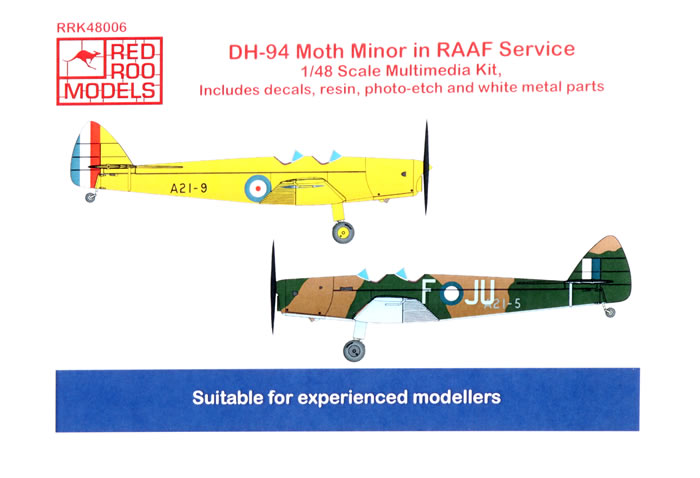
Red Roo Models, 1/48 scale
| S u m m a r y : |
Catalogue Number: |
Red Roo Models Kit No.RRK48006 - DH-94 Moth Minor in RAAF Service |
Scale: |
1/48 |
Contents and Media: |
30 parts in grey coloured resin; two parts in clear resin; four salmon coloured 3d printed resin parts; two parts in white metal; seven photo-etched parts on one fret; decals for seven marking options; comprehensive instructions (18 pages). |
Price: |
AUD$70.00 plus shipping available online from Red Roo Models |
Review Type: |
First Look |
Advantages: |
Interesting and unique subject; good casting; appropriate use of various mutli-media; high quality decals; excellent instructions. |
Disadvantages: |
BYO harness straps. |
Conclusion: |
Red Roo's 1/48 scale DH-94 Moth Minor is a unique and interesting offering that makes good use of its mutlimedia parts.
The parts breakdown is quite straightforward, making it suitable for modellers who have built only a few multimedia kits before. The marking schemes are colourful and varied too.
If you want a complete collection of RAAF aircraft in 1/48 scale, you are one step closer with Red Roo Models' DH-94 Moth Minor. |
Reviewed by
Brett Green

The de Havilland DH.94 Moth Minor was a 1930s British two-seat tourer/trainer aircraft built by de Havilland at Hatfield Aerodrome, England. With the start of the second world war production of the Moth Minor was moved to de Havilland Australia at Bankstown Aerodrome, Australia.
The Moth Minor was designed as a low-wing monoplane to replace the biplane Moth series, and was intended to give similar performance with less power, and without the need for rigging of the biplane's tensioners and struts. Its predecessor was the DH.81 Swallow Moth monoplane of 1931, of which only one was built. The wooden prototype of the DH.94 was first flown by Geoffrey de Havilland on 22 June 1937 at Hatfield Aerodrome.
Production started and nearly 100 examples had been built by the outbreak of the Second World War. With a selling price of only £575 the Moth Minor was popular with flying clubs keen to acquire modern monoplanes. Nine aircraft were specially built with hinged coupe tops instead of the normally open cockpit.
Moving to Australia
As the factory at Hatfield was needed for the war effort, the drawings, jigs, components and unfinished aircraft were shipped to the de Havilland factory at Bankstown, Sydney. More than 40 aircraft were produced in Australia.
Civil aircraft operated in the United Kingdom were commandeered for use by the Royal Air Force and Fleet Air Arm, and one example was used by the United States Army Air Corps. A large number of civil aircraft from the UK were sent to Australia, where they and a handful of locally built Australian civil aircraft were commandeered by the Royal Australian Air Force.
After the Second World War several Moth Minors continued to be flown by private owners in the United Kingdom.*
This subject is particularly interesting to me as the WWII Australian de Havilland factory where the DH-94 was built was located minutes from our family home of nearly 30 years. It was also situated on Bankstown Airport where I learnt to fly.
Red Roo Models and Planet Models have tackled the 1/48 scale DH-94 Moth Minor as a joint project. Planet Models released the Coupe version with a covered canopy, and not surprisingly Red Roo Models is offering the open cockpit Moth Minor in RAAF service.
Red Roo Models' DH-94 Moth Minor in RAAF service comprises 30 parts in grey coloured resin, two parts in clear resin, four salmon coloured 3d printed resin parts, two parts in white metal, seven photo-etched parts on one fret, decals for seven marking options and comprehnsive instructions.
The resin parts are good quality with subtle surface textures, little more than narrow raised lines for fabric strip and a few recessed panel lines as appropriate. The fuselage halves and wings are ready to use almost straight from the box. There are no casting blocks for the main parts. You'll just need to clean up the wisps of fine resin waste on the edges of the fuselage and the wings.
There is some variation in colour of the major resin pieces but this piebald finish will disappear under a coat of primer and paint.
The wings are cast as a single full-span part.
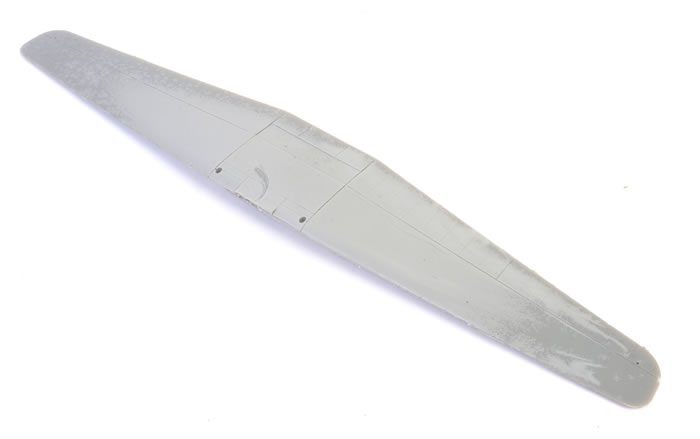
The horizintal tail planes are also cast as a single part with the elevators set at neutral, and the fin is a separate part.
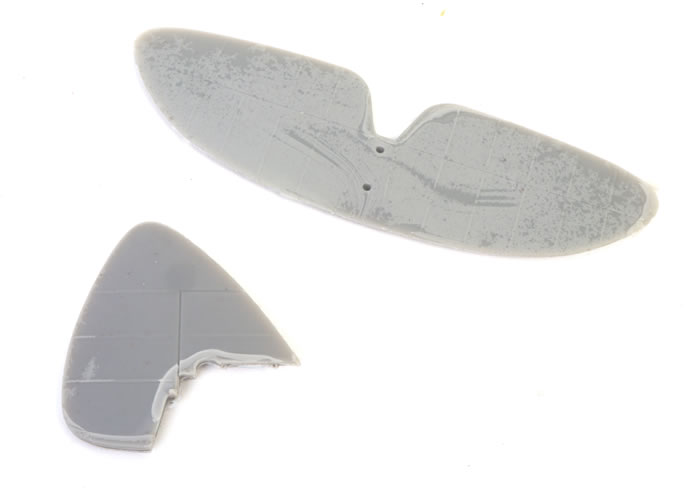
Interior detail is more than adequate with separate seats, instrument panels, flap controls, compass for the front and rear panels, communication tubes, throttles and handles, plus sidewall detail cast to the inside of the fuselage sides.
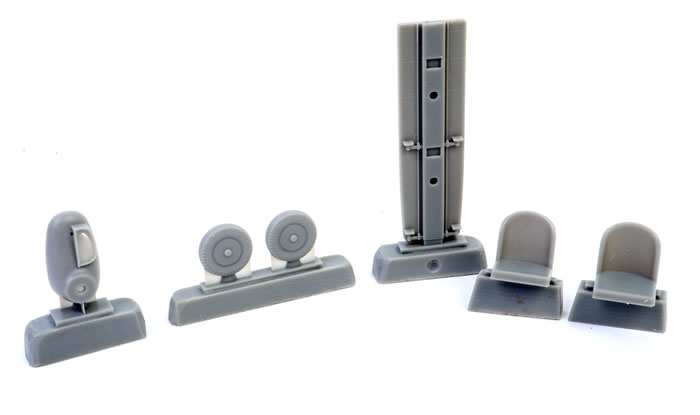
The instrument panels features raised bezels and rectangular shapes. Two sets of instrument dials are on the kit decal sheet but you will have to source your own harness straps.
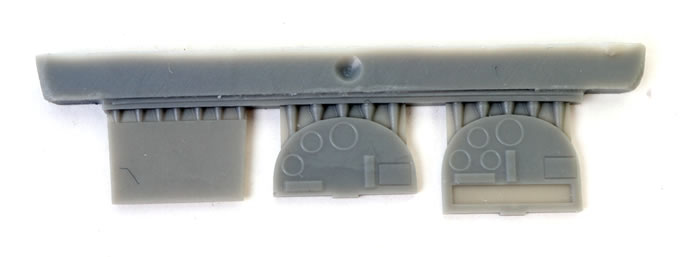
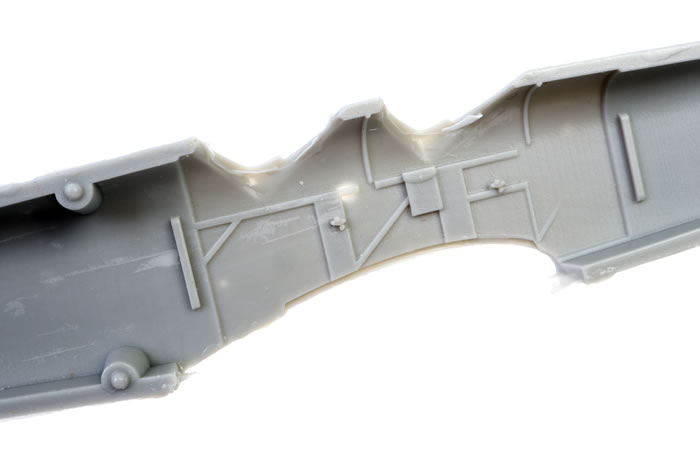
The photo-etched fret adds flaps and other detail parts.

The communication tubes and braces for the horizontal stabilisers are present on the 3d printed sprue.
The .15 mm copper wire is used to fabricate aileron mass balances. The throttle control rod will be made from the 0.014 thou brass wire and a section of the 4 mm plastic disk.
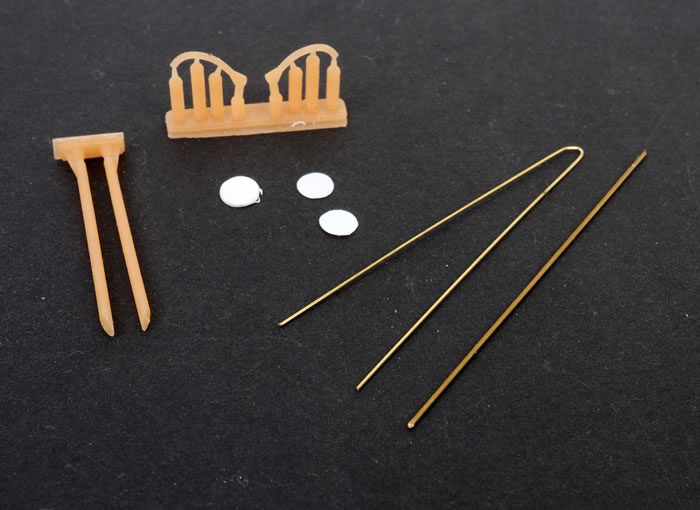
The propeller is presented as a single part on a 3d printed resin strip.
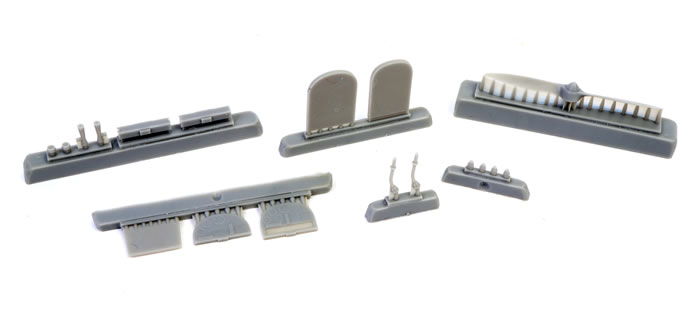
The windscreens are cast in clear resin. The look cloudy straight from the box but I am sure that a dip in Future Floor Polish (or your country's equivalent) will bring them up nicely.

The undercarriage legs are cast in white metal, including the one-piece tail strut and wheel.
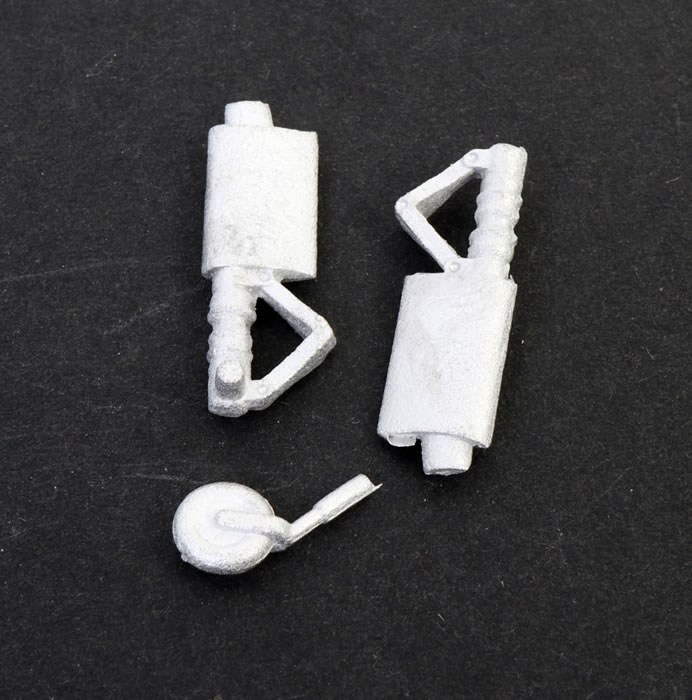
Anybody who has owned a Red Roo Models kit will attest to the wealth of detail and historical background included in the instructions. Their new Moth Minor is no exception. 18 pages cover history, reference photos, colours and markings guide and assembly instructions.
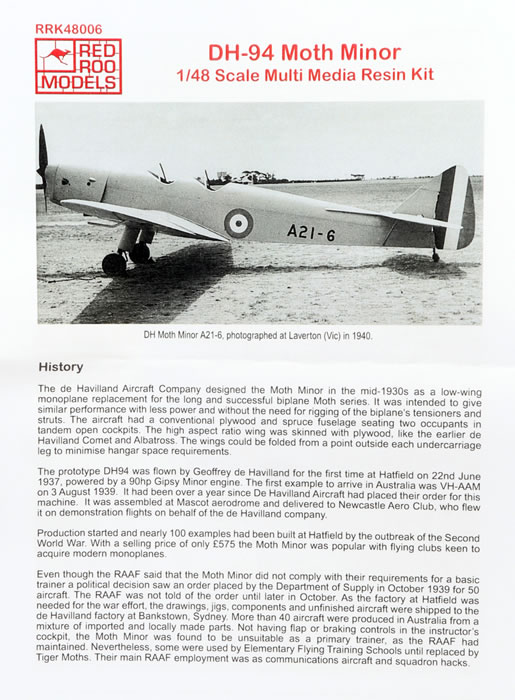
Seven varied markiung options are offered on the decal sheet.
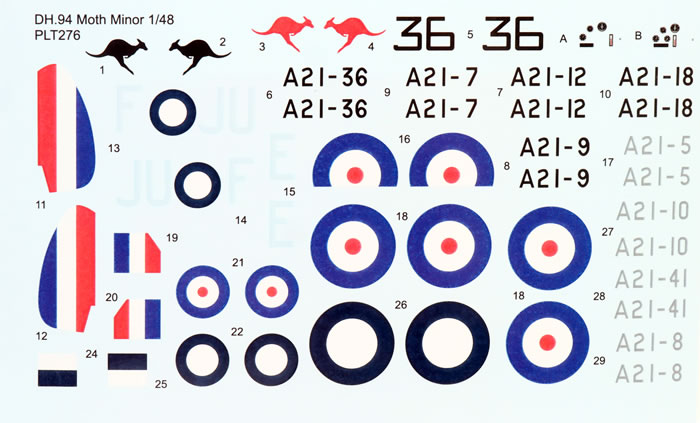
The decals look to be the style of Eduard's current "peel off the top layer" markings. I will test this theory on one of the options that I don't plan to use.
The colour of the codes JU-F look like RAF Sky in the instructions, but they appear to be RAAF Sky Blue on the decal sheet itself. Sky Blue is more likely to be correct.
Red Roo's 1/48 scale DH-94 Moth Minor is a unique and interesting offering that makes good use of its mutlimedia parts.
The parts breakdown is quite straightforward, making it suitable for modellers who have built only a few multimedia kits before.
The marking schemes are colourful and varied too.
If you want a complete collection of RAAF aircraft in 1/48 scale, you are one step closer with Red Roo Models' DH-94 Moth Minor.
Thanks to Red Roo Models for the sample.

Review Text & Images Copyright © 2023 by Brett Green
Page Created 5 Decenber, 2023
Last updated
6 December, 2023
Back to HyperScale Main Page
Back to Reviews Page |
